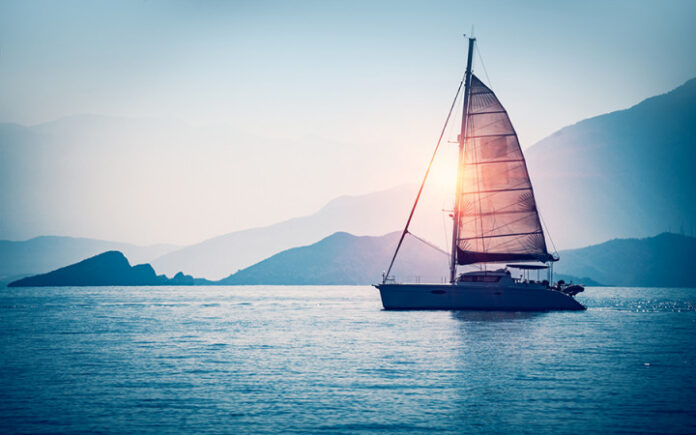Here are 6 Tips To Remember When You Go Sailing! Please read them before you go on your sailing trip! First of all, always wear the proper clothing. In case of an accident, you should have the appropriate safety nets and a life jacket. If you have never been sailing before, you should know the basics! Besides the proper clothing, there are other necessary safety measures you need to follow, including bringing your GPS or a compass. You can also learn more through https://www.visitcaymanislands.com/en-us/experiences/watersports/sailing.
Safety precautions
While sailing, there are many safety precautions to keep in mind to ensure your safety. First, you should know where you are going and what kind of boat you have. Knowing the destination’s weather is essential since it can change rapidly. Also, make sure to pack a radio so that you can contact rescue services in an emergency. Always watch for hazards, such as a rip current or sudden weather changes. Another thing to remember is to maintain good speeds and observe your surroundings. It would be best if you also avoided places with high concentrations of boats.
Before heading out to sea, ensure you understand how to handle your vessel. Be aware of its limitations. Learn how to operate it safely before setting sail, and be mindful of the laws in your area. You should also be aware of its speed and float plan to ensure you won’t crash into anyone else. This is the most important tip you have to keep in mind when sailing. If you want to purchase your own boat for sailing, you can check out boatsforsale.co.uk.
Proper clothing
The right sailing apparel will determine your enjoyment of the sea. Choose an outfit that will protect you from the elements while allowing you to move around the boat without discomfort. You can choose different outfits based on the type of boat and weather conditions. Alternatively, check out our sailing clothes guide. When it comes to footwear, sailors should avoid wearing sneakers or leather shoes as they may get wet and smell bad. Instead, wear lightweight, comfortable, and non-slip shoes. Remember that barefoot can become very cold and unpleasant if not adequately protected. Besides, sailing boots are not for the faint of heart. A pair of lightweight, non-slip hiking shoes can work for this purpose. But be sure to pack a spare pair just in case.
Safety nets
One of the first things you should remember while sailing with young kids is to bring safety nets. These are great to keep your kids on the deck and help prevent them from falling overboard. It can be difficult to convince young children to wear life jackets when they’re out on the water, but they must stay safe. Safety nets are also suitable for parents who want to protect their kids from the sun.
Lifeline netting is an essential safety net to have onboard. This net is designed to prevent small children from falling out of the boat or through the railing. You can buy lifeline netting for your sailing vessel and have it installed by the time you board. If you can’t find one on your boat, ask your charter operator to establish one before leaving. They’ll be glad to help you.
Time on the water
While sailing, you’ll likely find yourself in a different time zone than where you live. To combat this problem, you may want to set your watch ahead of time. Alternatively, you can select your clock for an hour of local time before leaving. Changing the time while sailing isn’t a good idea; it may be a good idea to keep your navigation skills sharp. First, however, it is essential to make sure that you know the tides in the area you’ll be sailing in.
Respect
To sail with respect, it’s essential to understand how racing rules are interpreted by other boats. Often, sailors lose respect by trying to outsmart their competitors in the race. Instead of focusing on the win, they should focus on playing by the rules when no one is watching. It’s also crucial to respect the race committee and fellow competitors. Avoid making excessive noise when entering the harbor, using outboard engines at night, and causing wake-ups. Instead, enter the harbor at a moderate speed and follow other boats. Never slam on your machine or run a generator. Doing so can cause problems for other boaters. Also, make sure not to talk loudly or play loud music. Respect other boats by keeping a distance of about 200 feet. It would be best if you also were considerate of shoreline owners.
Safety line
A safety line when sailing is a vital component of safe boating. A line must be attached to the boat using good attachment points. Guardrails are not designed to handle loads of safety harnesses and should not be used as attachment points. If you are unsure where to attach a safety line, consult a marine safety expert. If you are unsure, read the following advice from the Marine Accident Investigation Branch. The bulletin is available on the MAIB website.
A safety line clips onto a safety harness or jackline. A jackline is a wire that runs fore and aft along the boat’s centerline. These lines are attached to a fixed point, usually the cockpit, and may extend on side decks. In the event of a sailor stepping onto the jackline, it may roll and cause the sailor to fall overboard. However, a flat safety line with a rope can prevent a person from falling overboard and allow them to get back on the boat.





























